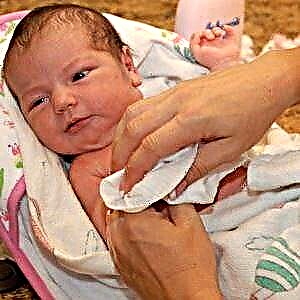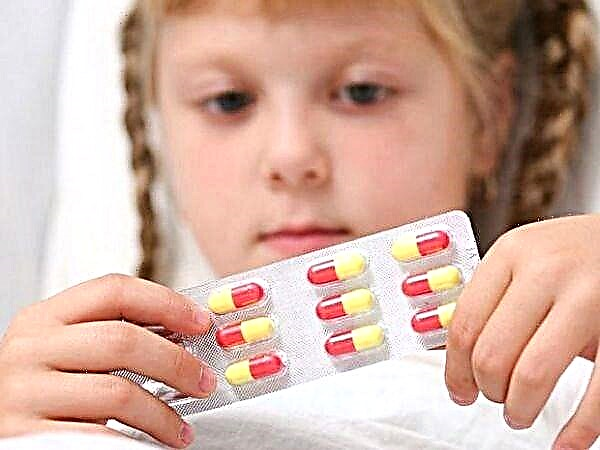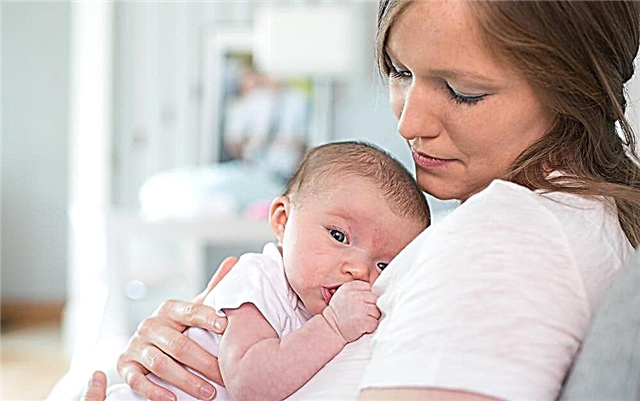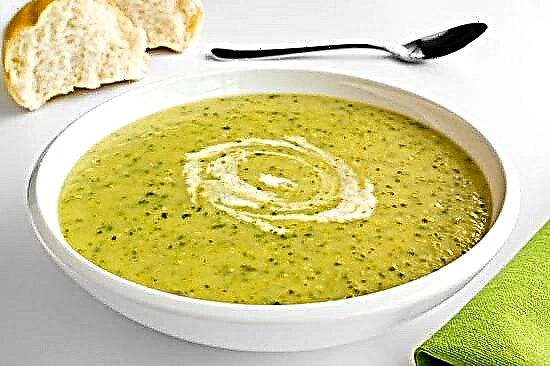According to statistics, from 7 to 10% of young children suffer from some form of allergic contact dermatitis. One of the most common causes of contact allergies in infants is laundry detergent. The article discusses the main risk factors, clinical features, diagnostics and methods of treatment of an allergic rash to powder in a child.
Allergy to powder in infants
In the overwhelming majority of cases, it is manifested by allergic contact dermatitis - inflammation of the skin of a child under the influence of allergenic components of washing powder.
 In response to the antigens contained in the powder, the permeability of the vascular wall increases in the thickness of the newborn's skin, which is manifested by redness and edema.
In response to the antigens contained in the powder, the permeability of the vascular wall increases in the thickness of the newborn's skin, which is manifested by redness and edema.
Biologically active substances that appear during an allergic reaction provoke the development of itching and burning. The baby's skin becomes more sensitive to external factors, which further exacerbates the situation.
Risk factors the appearance of an allergy to powder in an infant:
- Genetic prerequisites for the burden of allergic diseases. The risk of developing contact allergic dermatitis is higher in children whose relatives suffer from various allergic ailments.
- Artificial feeding. Natural feeding up to 4 months is a protective factor against skin allergies in children.
- Intrauterine infections.
- Accommodation of a child in megacities.
- Antibiotic therapy.
- Autoimmune skin diseases.
Allergenic triggers contact allergic dermatitis to washing powder in children:
- Anionic surfactants.
- Phosphates.
- Bleaches.
- Flavors.
What does an allergy to laundry detergents look like in children?
Red spots appear on the child's skin, often with bubbles filled with liquid, there may be swelling. The kid is worried about itching.
 Sometimes a secondary infection joins - yellowish crusts appear at the site of the opened vesicles.
Sometimes a secondary infection joins - yellowish crusts appear at the site of the opened vesicles.
The clinical picture depends on the amount of substance that got on the skin of the newborn, and the initial state of the skin itself (a brighter picture is present on the previously damaged skin).
How can parents suspect an allergic reaction to household chemicals in a baby?
So, your little one is suddenly covered with red itchy patches all over his body.
First, remember: have you introduced new types of food into the baby's diet, have not used new cosmetics, medicines.
Allergy to washing powder refers to delayed-type hypersensitivity allergic processes. Allergy symptoms may appear 3 to 14 days after skin contact with an allergen.
If you suspect a child is allergic to washing powder, be sure to tell the doctor the name of this household chemical.
The doctor may prescribe a skin test for the baby to determine the exact allergen.
Treatment of allergic rash to washing powder in newborns:
1. Elimination of the allergen. Use only special hypoallergenic powders for washing baby clothes.
2. Drug therapy:
 lotions. If weeping skin is present, the doctor may prescribe lotions with a string, oak bark, Burov's liquid. Lotions can be applied every 3 hours, the duration of the procedure is 15 minutes;
lotions. If weeping skin is present, the doctor may prescribe lotions with a string, oak bark, Burov's liquid. Lotions can be applied every 3 hours, the duration of the procedure is 15 minutes;- topical glucocorticosteroids. With an average severity of the process, antiallergic hormonal agents are prescribed. Suitable for quick relief of inflammation: Lokoid, Elokom, Advantan;
- antihistamines are used to relieve itching: Zodak, Tsetrin, Suprastin;
- when an infection joins, agents containing antimicrobial components are prescribed (Triderm, Pimafukort).
Forecast
Favorable with timely diagnosis and treatment. The main rule is to quickly eliminate the causative allergen, otherwise the therapy of the disease will be ineffective.
Be sure to use hypoallergenic baby detergents.
- Mako Clean. Contains APAS based on plant raw materials. Eco powder. Fragrance and phosphate free. Manufactured in Russia.
- Lind. Developed on the basis of a special formula from natural and herbal ingredients. Manufacturers advise using this powder both for washing clothes and bedding for a newborn, and for washing things of a young mother.
- LV. The powder is produced in Finland. The formula was developed with the participation of the union of patients with allergies and bronchial asthma. Washes well from fabrics. Made from high quality components only.
- Ecover Zero. Asthma-Allergie certified. Based on mineral and plant components. Biodegradable. No fragrances, preservatives, petroleum products. Highly environmentally friendly. Manufactured in Belgium.
- Miene Liebe. Does not contain chemically aggressive components. Can be used from birth. Economical. Safe. Eco-friendly. Country of origin - Denmark.
Useful information for parents
Remember: your baby's skin is very sensitive and needs special care.
- If you have an established allergy to household chemicals, use only high-quality, environmentally friendly laundry detergent for children and your clothes.
The clothes of a young mother also need to be washed with a hypoallergenic powder, since the baby is in contact with her.
- Use new cosmetics and drugs with caution.
- It is forbidden to use creams with an expired date.
- Pay attention to the composition of your cosmetics. It is better to choose products without fragrances and preservatives.
- Show your baby to an allergist and dermatologist in a timely manner.
Do not use soap, it dries out the skin a lot.
Which skin care products should you use?
Allergists recommend small patients to use therapeutic cosmetics of the Topikrem, Uryazh, Bioderma, Physiogel series. You must have the entire series of funds.
 For cleansing the skin, products from the Aven and Ducre laboratories are well suited.
For cleansing the skin, products from the Aven and Ducre laboratories are well suited.
Deeply moisturize the skin of newborns Lipikar-Balsam, Mustela StelAtopia cream-emulsion, Lipidiosis 1,2,3. In moments of exacerbation of the disease, it is recommended to use Atoderm cream with zinc, Lipikar bath oil. In remission - Mustela cream-emulsion.
Atoderm with zinc, Mustela inhibit the growth of bacteria.
Memo to parents
- According to statistics, from 7 to 10% of young children suffer from some form of allergic contact dermatitis.
- One of the most common causes of contact allergies in infants is laundry detergent.
- Allergy to laundry detergent refers to delayed-type hypersensitivity reactions. Allergy symptoms may appear 3 to 14 days after skin contact with an allergen.
- If you are allergic to household chemicals, use only high-quality eco-friendly laundry detergent for children and your clothes.
- Allergists recommend young patients to use therapeutic cosmetics of the Topikrem, Uryazh, Bioderma, Physiogel series.
Article rating:

 lotions. If weeping skin is present, the doctor may prescribe lotions with a string, oak bark, Burov's liquid. Lotions can be applied every 3 hours, the duration of the procedure is 15 minutes;
lotions. If weeping skin is present, the doctor may prescribe lotions with a string, oak bark, Burov's liquid. Lotions can be applied every 3 hours, the duration of the procedure is 15 minutes;

